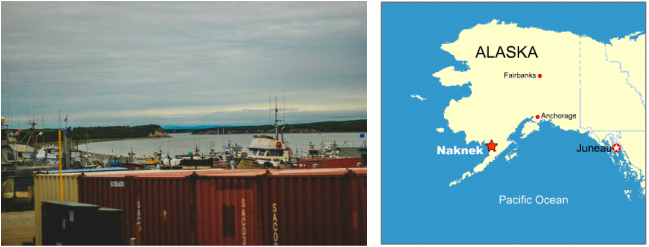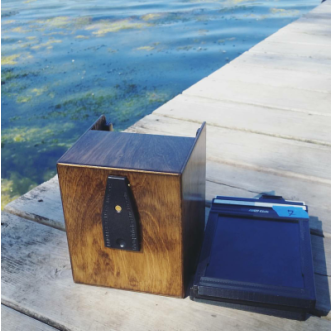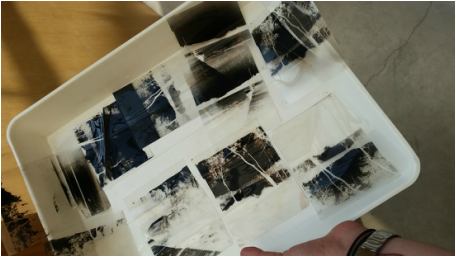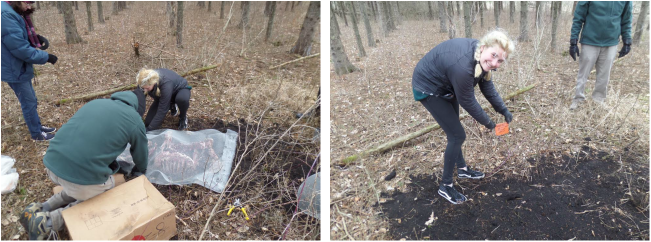|
The main focus of my thesis will occur here in the beautiful town of Naknek, Alaska, or at least 3 miles down the road from it at Leader Creek Fisheries. Last year was my first year working Quality Assurance during Sockeye Salmon season and this year I have returned, pinhole camera in hand, attempting to record the massive amount of love and strength I gained from this place. One of my best friends who I met up here told me "You're the most you when you're in Naknek" and she's right. I have been struggling capturing the emotion of a place using only photos of the landscape, but will spend the summer exploring different techniques and hopefully getting the results I need. If I've learned anything, it is that I need to live with a project to make it the best it can be.
Internet is spotty up here so probably expect another update in August. Peace and Blue, Lexi
0 Comments
Lakeside Laboratory is located in Okaboji, Iowa and is where my father has taught ecology since before I was born. I remember running through the wild green brush and the long grasses of the prairie fondly. It made sense to come to Lakeside when contemplating places for a project on places which make me feel strong.
In recent years, Lakeside has started an artist in residence program and in my time here I was able to speak to the artists currently working in the studio space, Joseph Mougel and Cynthia Brinich-Langlois. Both teach at University of Wisconsin Milwaukee and remind me of Scott Murphy, my thesis adviser. Joseph loves a good problem to solve and spent the morning with me drawing up concepts on how to expose the bones with pinhole cameras. Cynthia is a printmaker by nature and also works with cyanotype process. It felt a little like fate that a master film photographer and a wonderful printer were the artists at Lakeside in the time I visited and were able to help me troubleshoot some of the problems I had been having with my pinhole camera. It also is interesting how artists approach similar themes such as human impact on the land or vice versa. By the time I left their studio, I had a long list of artists who also work with similar themes as we do. It was a joy to meet inspired and down to earth artists who spend their life clearing their mind with old fashioned techniques. Peace and Blue, Lexi Fun Fact about Lexi #1, I hate pinhole photography. When my Dad found out I was using a pinhole camera for my thesis, he laughed at me. I should have listened because damn, I hate taking pinhole images. But, the result is worth it. If I hate the process so much, why did I decide to go pinhole? My thesis revolves around feelings and emotions which places can give us. While I could use a digital camera and print crystal clear images onto a transparency, I want to use a format which captures more than just a perfect replication, but the emotion behind a place too. Fun Fact about Lexi #2, I don't shoot landscapes often, and that seems to be the main subject matter of the thesis. Apparently I decided to torture myself with this project. Luckily, the photos have turned out crisp and with beautiful contrast thus far. With that, I am off to Lakeside Laboratory where I will be photographing my childhood summer play place and meet with artists in residence who are using large format cameras and cyanotype printing.
Peace and Blue, Lexi How many people can say that their family would freeze their butts off to bury bones in the middle of the woods for their daughter's art thesis. I now know that my family would. Thanks to Tom Kroll and the Saint John's Outdoor University, I have been given permission to create a small graveyard of cow and deer bones on the arboretum's rolling acres of land. This was step one in my thesis plan of action. Once school ended, I went out to dig up some of the bones and hopefully do some cyanotype tests on them. Unfortunately, the tests never occurred. By burying the bones I was hopeful all the meat and membranous skin would be eaten off by bugs and maggots.The maggots were present, and there were plenty of bugs, but everything was soggy, gross and a little bit moldy. So I decided to give the bones some more time and exposed them to open air taking two bones to try another method of cleaning. I tried to simmer and soak these bones in hydrogen peroxide, but there was still a bit too much tissue to clean the bones in this manner. Being stubborn, I refused to accept this until I spent a week attempting to clean the bones and finally accepted defeat. Until August, the bones will decay in the summer sun, fingers crossed when I return to the graveyard they will be cleaner than last time. Peace and Blue, Lexi |
This blog will follow my life and art process. Archives
December 2019
|
Proudly powered by Weebly



